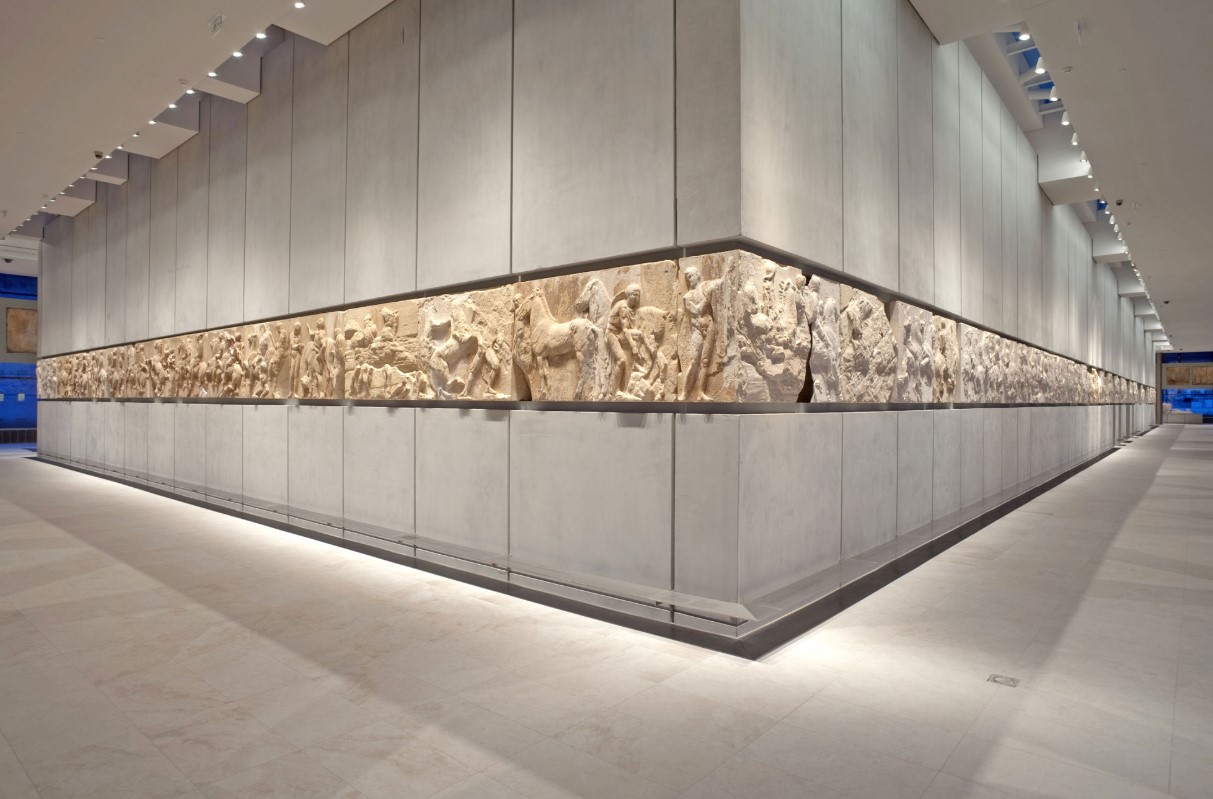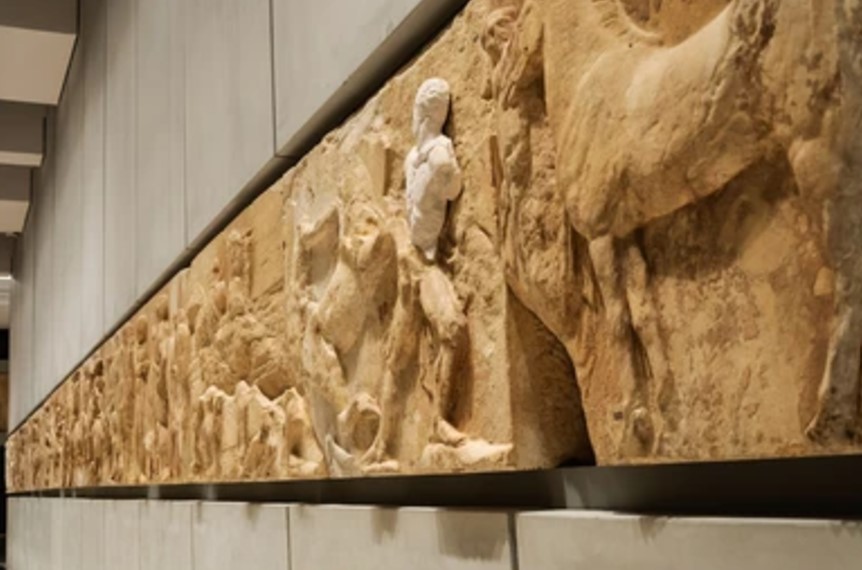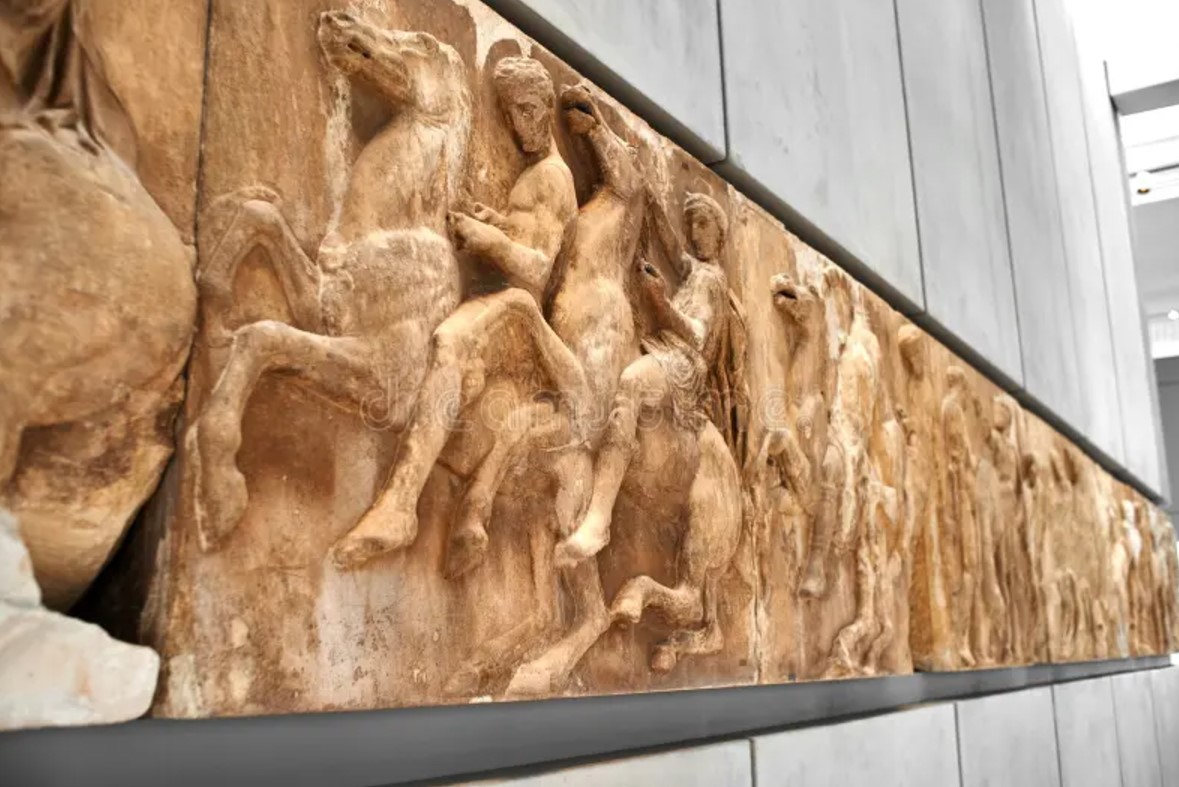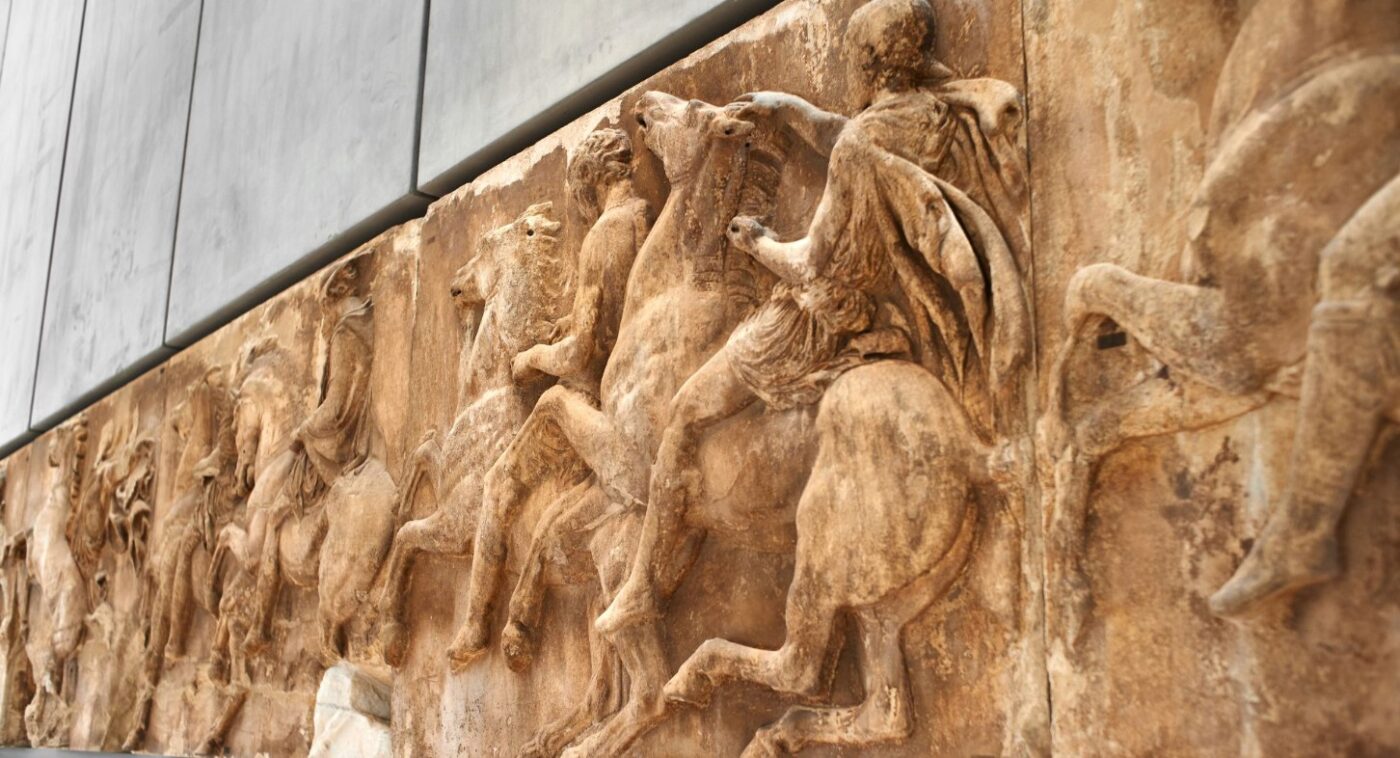The Parthenon Frieze, a 525-foot (160-meter) tall sculptural marvel, represents the cultural and artistic pinnacle of ancient Athens. Created between 443 and 437 BC, this extraordinary work adorns the interior walls of the Parthenon, depicting the vibrant Panathenaic Procession—a major festival in honor of Athena, the city’s patron goddess. With over 350 meticulously crafted statues, the frieze immortalizes the unity, devotion, and grandeur of Athens during its Golden Age. Today, archeology.dulichvn.net updates, the frieze is housed at the New Acropolis Museum in Athens, where it continues to fascinate audiences around the world.
1. The Parthenon Frieze A Celebration of Athena
The Parthenon Frieze is a visual narrative of the Panathenaic procession, one of the most significant religious festivals in ancient Athens. This grand event combined spirituality, civic pride, and cultural expression.

1.1. Significance of the Panathenaic Festival
Held every four years, the Panathenaic procession honored Athena, the goddess of wisdom, warfare, and crafts. Citizens from all walks of life participated, symbolizing the unity and devotion of Athens.
See more: The Dabous Giraffe Carvings: A Window Into Prehistoric Africa
1.2. Representation on the Frieze
The frieze portrays various aspects of the festival, from the sacrificial animals and musical performers to the grand parade of citizens and the presentation of the peplos, a sacred robe woven for Athena’s statue.

1.3. Connecting Art and Religion
This masterpiece not only celebrates the festival but also serves as a powerful link between art and religion, embodying the Athenians’ deep reverence for their goddess and their city.
2. The Artistic Brilliance of the Frieze
The craftsmanship of the Parthenon Frieze is a stunning example of classical Greek artistry. Every detail, from the expressions of the figures to the movement of their garments, reflects the skill and creativity of its creators.

2.1. Design and Structure
The frieze runs along the inner colonnade of the Parthenon, covering all four sides. It measures approximately 3.5 feet (1.07 meters) in height and is carved in low relief, giving it a sense of depth and dynamism.
2.2. Depiction of Over 350 Figures
The frieze features a diverse array of figures, including gods, heroes, citizens, and animals. Each character is unique, showcasing meticulous attention to detail and the sculptors’ ability to capture lifelike movement and emotion.
See more: The Dabous Giraffe Carvings: A Window Into Prehistoric Africa
2.3. Innovations in Greek Sculpture
The Parthenon Frieze represents a leap forward in Greek sculpture, with its emphasis on naturalistic poses, intricate drapery, and harmonious composition. These elements set a new standard for classical art.
3. The Historical and Cultural Context
The creation of the Parthenon Frieze reflects the political, cultural, and religious ideals of Athens during its Golden Age, a period marked by unprecedented achievements in art, philosophy, and democracy.

3.1. Pericles and the Parthenon
Commissioned under the leadership of Pericles, the Parthenon was designed to showcase Athens’ power and cultural supremacy. The frieze, as part of this grand architectural project, symbolized the city’s unity and devotion to Athena.
3.2. Symbolism of the Figures
Each figure on the frieze carries profound symbolism. The gods represent divine approval, while the citizens highlight the democratic spirit of Athens. Together, they underscore the harmony between the human and the divine.
3.3. Athens at Its Peak
The frieze immortalizes Athens at the height of its power, capturing the essence of its society, from religious devotion to civic pride. It serves as a timeless reminder of the city’s enduring legacy.
4. Preservation and Legacy
The Parthenon Frieze has endured centuries of history, from the glory of ancient Athens to modern times, where it remains a centerpiece of Greek heritage.

4.1. Journey Through Time
Over the centuries, the Parthenon and its frieze suffered damage from wars, looting, and natural decay. Despite this, much of the frieze has been preserved, allowing modern audiences to marvel at its beauty.
4.2. The New Acropolis Museum
Today, the majority of the frieze is housed in the New Acropolis Museum in Athens. This state-of-the-art facility ensures its protection while providing visitors with an immersive experience of ancient Greek art and culture.
4.3. Global Influence
The Parthenon Frieze continues to inspire artists, historians, and architects worldwide. Its themes of unity, devotion, and cultural pride resonate across generations, making it a universal symbol of human achievement.
Conclusion
The Parthenon Frieze is more than a sculptural masterpiece; it is a vivid portrayal of Athens’ Golden Age—a time of unparalleled cultural and artistic excellence. Depicting the grandeur of the Panathenaic procession, the frieze captures the essence of Athenian society, where art, religion, and civic pride intertwined seamlessly. Preserved in the New Acropolis Museum, this iconic work continues to honor the legacy of ancient Greece, inspiring awe and admiration across the ages.

CÁC TIN KHÁC
Mary Walton: The Forgotten Inventor Who Helped Clean Up America’s Cities
Tomb of Queen Nefertari in the Valley of the Queens, Egypt
Discover the Hypostyle Hall of the Temple of Hathor at Dendera
Venus de Losange: Unveiling the Mystery of a 20,000-Year-Old Paleolithic Icon